UPDATE: This article originally appeared in January 2020, most recently updated in April 2024.
In the past few decades, the variety of bamboo products has just exploded. From socks to towels to sheets to flooring, bamboo can do pretty much anything. And thanks to a preponderance of Moso bamboo from China, bamboo IS doing nearly everything.
The environmental benefits of bamboo have made it a top choice among eco-conscious consumers. And many of those consumers are also asking, “What about bamboo farming in the US?”
Bamboo farming in America is a terrific idea. You can cultivate bamboo anywhere that they grow corn, and with fewer chemicals. The most massive varieties of bamboo are better suited for tropical and subtropical climates, but temperate bamboo like Phyllostachys are fast-growing and cold hardy, and many species grow larger than trees. Although it won’t grow as well in Kansas or Kentucky as it does in its native China, commercial bamboo holds great promise for American farmers looking to diversify their acreage.
Gardeners and landscapers have been cultivating bamboo in the US for years. And now, the excitement surrounding the domestic bamboo industry is greater than ever. From farm to factory, new ideas and opportunities are sprouting up almost daily.
Current estimates indicate that the global bamboo industry turns over about $80 billion a year. The United States continues to be the largest importer of bamboo, buying it mostly from China. So the incentives for growing bamboo on American soil are significant. But that doesn’t mean it’s going to be easy. None of the commercially important bamboo species is native to the US, and no one in this country has yet demonstrated bamboo farming – from seed to mature harvest – as a proven business concept.
If this topic interests you, be sure to check out our in-depth article on Growing Bamboo for Profit.
Can you grow bamboo in the US?
Gardeners across the US plant bamboo as an ornamental and for privacy screens. In at least 49 states, and in Canada too, you can find bamboo varieties that will thrive or at least survive. No, your bamboo might not achieve its highest potential in a place like Vermont or Minnesota, but yes, it can grow.
Bamboo species to choose from
Now growing bamboo in your garden and farming it as a cash crop are two very different things. For the garden, there are hundreds of bamboo species to choose from, depending on the climate and the desired effect. But to farm bamboo and compete with China on the open market, there are just a handful of species worth looking at. (Take a look at our article on Best bamboo species for farming.)
Until quite recently, all the commercial bamboo farming was taking place in China and southern Asia. Most species of bamboo are native to that part of the world. That means there is no difficulty in finding a type of bamboo that will perform well, and without unexpected pests or other problems.
Moso bamboo, from southern China, is the variety that produces bamboo flooring and clothing. That’s where the demand is. To grow bamboo for poles and light construction, there are many more species to choose from. Guadua bamboo is the primary variety used in Latin America for poles and construction, but it doesn’t do so well north of the tropics. (See our in-depth article on Bamboo varieties for construction.)
But before planting the US with great swaths of Chinese and South American bamboo, one needs to do some serious research. Non-native plants can have a hard time adapting to foreign weather and soil. And, of course, bamboo is notoriously fast-spreading. These are some serious considerations to take into account before introducing bamboo into a foreign habitat on an industrial scale.
Phyllostachys nigra ‘Henon’ (Giant Gray) and Phyllostachys bambusoides (Japanese Timber Bamboo) are temperate varieties that grow more easily in a wider range of climates, USDA zones 7-10. They can easily get 50 feet tall and 5 inches in diameter, with straight, smooth culms, excellent for building and other applications.
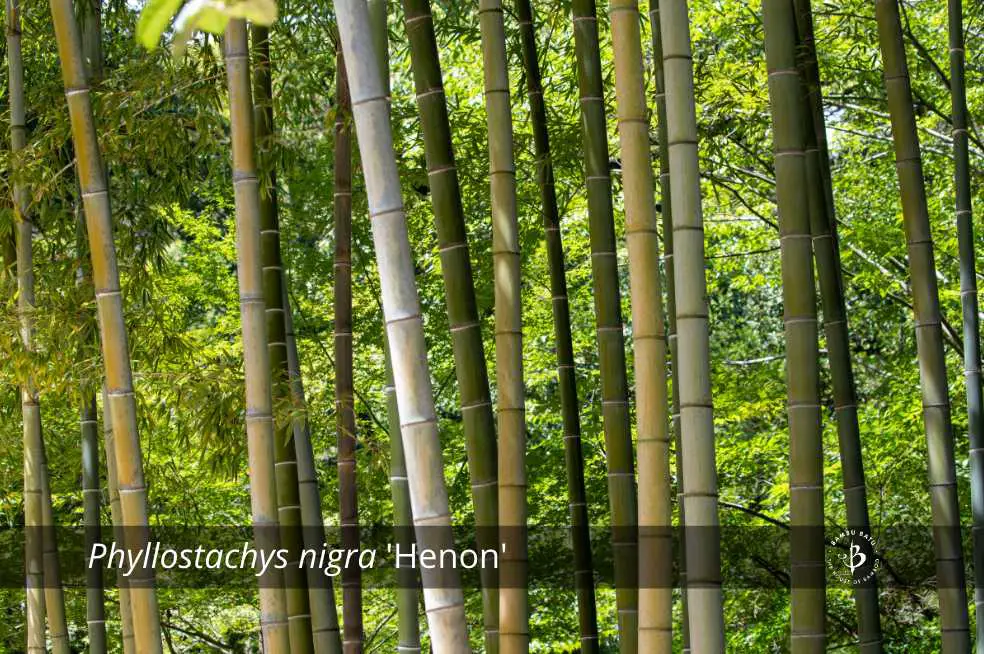
Phyllostachys rubromraginata, or Red Margin Bamboo, has long been popular as an ornamental, and now it’s gaining currency as an excellent cash crop. Rubro, as it’s sometimes known, is extremely resilient, highly tolerant of both heat and cold. And in terms of proliferation, it’s one of the fastest-growing species there is. It may not be a giant species like Moso or Henon, but Rubro grows in dense thickets that can yield as much biomass per acre as any timber bamboo.
Bambusa balcooa is an Indian species now grown any many parts of Asia and Africa for its great size and unusually thick culms. This species produces great quantities of biomass and very high-quality poles for construction. It’s a clumping bamboo, but also a tropical variety that requires a warm climate.
Dendrocalamus asper is another of the most important bamboo species worldwide. Many in Southeast Asia and Indonesia consider it the strongest of all bamboos. (But in South America they make the same claim about Guadua.) Asper poles are massive and excellent for construction. It also produced edible shoots. Like B. balcooa, it’s a tropical clumping bamboo that needs a warm climate to thrive and be economically viable. Many farmers are now growing D. asper in Florida.
Climate conditions for bamboo
It’s true, there are types of bamboo that will grow all over North America. But in order to farm bamboo on an economically viable scale, most varieties will need a bit of heat and humidity to reach their full potential.
There is no shortage of bamboo species that can withstand freezing temperatures. In fact, you can grow bamboo anywhere that you can grow corn. But very cold weather will undoubtedly slow down the crop and reduce the overall harvest. So the practical zones for bamboo farming are pretty limited in the US. The Southwest may have some potential, but it’s a bit dry there. And in order to farm successfully and competitively, you need all the conditions working in your favor. Still, some farmers are considering bamboo in the California desert.
The ideal region for an American bamboo farm is the deep Southeast. Once the land of King Cotton, it’s now the up-and-coming grove for Big Bamboo.
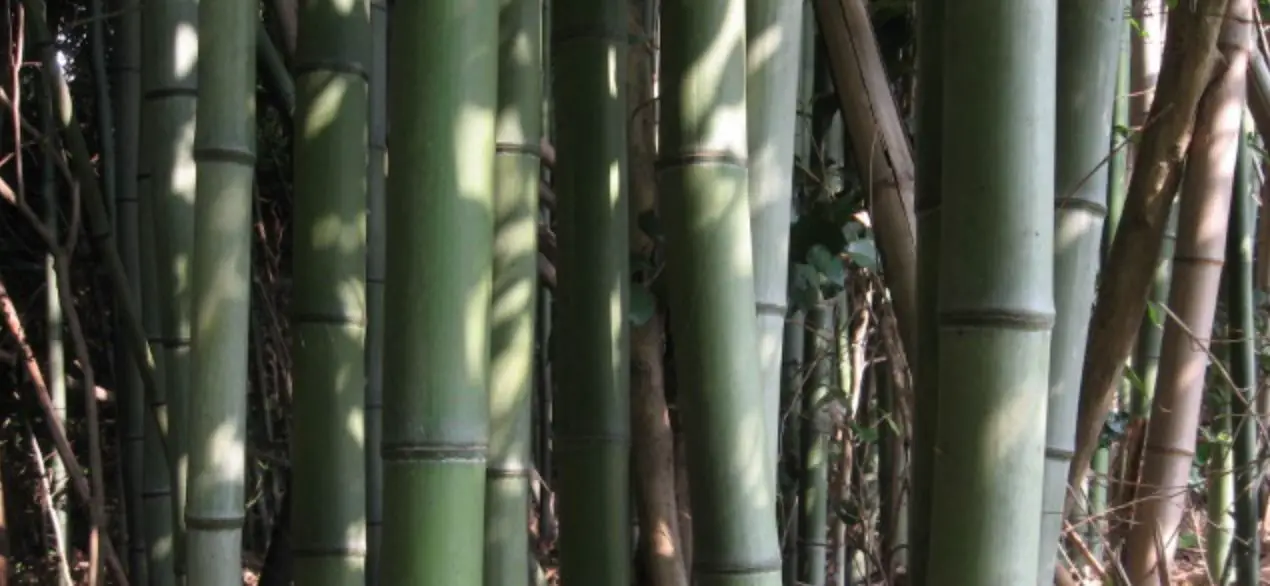
Bamboo farms in Florida
A longstanding fruit farm in Manatee County, Florida, Mixon Farms went ahead and planted about eight acres of commercial bamboo around seven years ago (2016). With citrus trees struggling to cope with plagues of pests, disease and climate change, these pioneers took a stand with bamboo. Local media took note of this early adopter of bamboo farming and brought national attention to Mixon Farms. Recently, however, they began selling off their land, and it looks like the bamboo groves will most likely be converted into housing developments.
Based in Bradenton, Florida, near Tampa, Mixon Fruit Farms was counting on bamboo to be a more resilient and more profitable crop than the citrus that has long dominated the local landscape. They primarily planted Moso bamboo (Phyllostachys edulis) for its edible shoots, high in fiber and rich in vitamins and minerals. Once the plantation was more mature, they intended to start harvesting the massive poles for timber and a multitude of other uses. But now, it looks like that bumper harvest will probably never take place.
Also in Bradenton, Rizome Bamboo currently cultivates thousands of hectares of bamboo in the Philippines, and has ambitious plans to roll out a plantation in the Sunshine State. Small test crops with an assortment of tropical and subtropical bamboo varieties have already shown great promise. They currently specialize in producing engineered bamboo lumber, from their Filipino crops, for the construction industry. The company also has a listing on Start Engine, which helps startups raise investment capital from the general public.
To the southeast, near Fort Lauderdale, OnlyMoso specializes in growing Moso bamboo and Dendrocalamus asper for all of its many uses, from shoots to floors to sunglasses. More importantly, they have been providing starter plants to other farmers and growing operations, including Mixon Farms. They also have partners in China and across Europe.
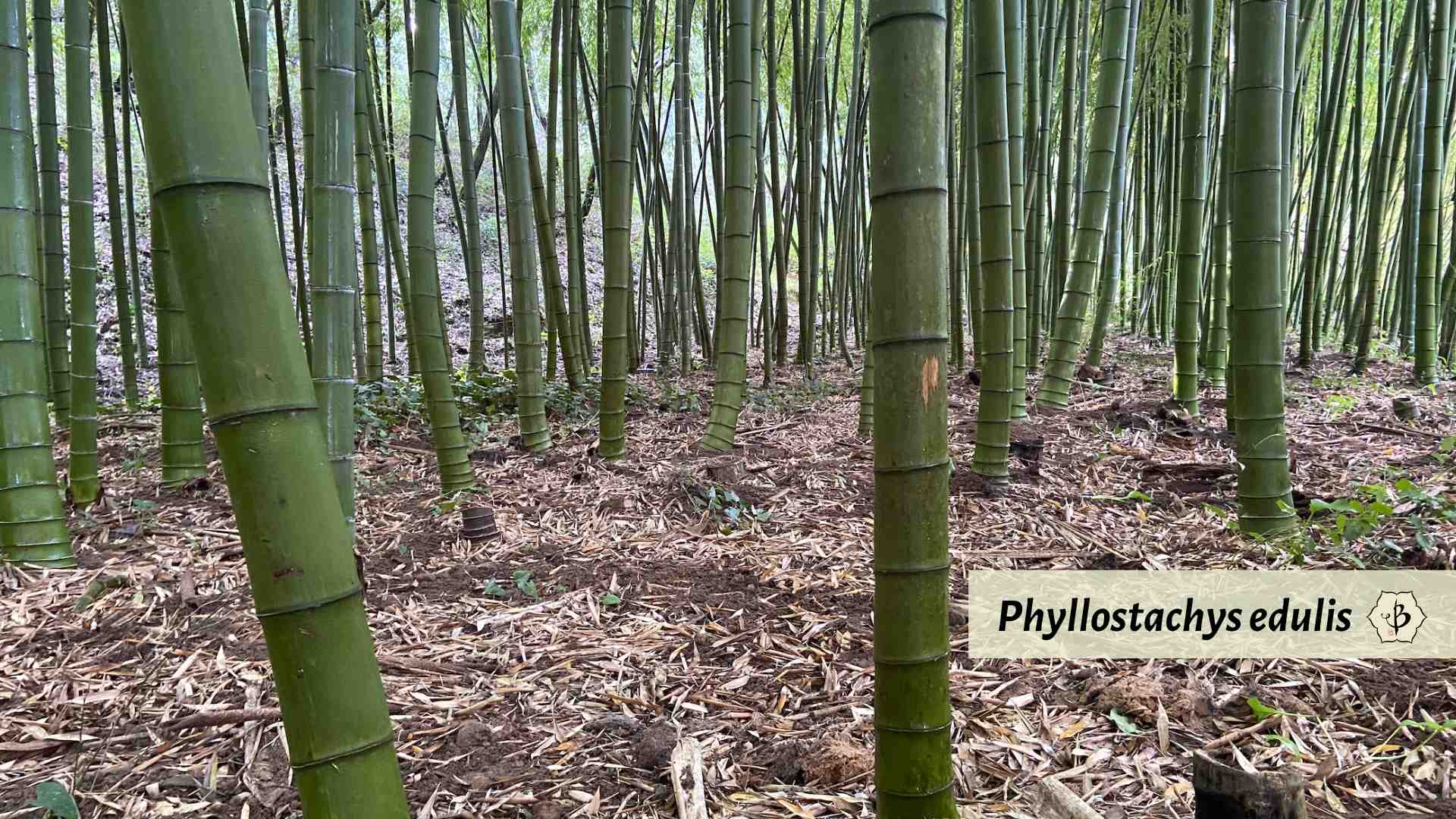
Resource Fiber of Alabama
Outside of Florida, Resource Fiber of Alabama may have had the largest operation of bamboo cultivation and processing in the country. In addition to farming 100 acres of Henon and Rubro bamboo, they also milled their own bamboo to produce the nation’s first supply of domestically grown and manufactured bamboo laminate.
Resource Fiber claimed several patents related to bamboo building materials and railroad ties since its inception in 2011. In 2020 the company was setting up a facility to process and manufacture engineered bamboo lumber.
2022 UPDATE: At the end of 2021, Resource Fiber was seeking new investors to keep their operation growing and expanding. At the 11th hour, the deal fell through, forcing the pioneering bamboo enterprise to file for Chapter 7, closing permanently.
Farming bamboo in North Carolina
National Bamboo is helping farmers throughout the region convert their land from traditional crops to promising bamboo. Their species of choice is Phyllostachys nigra ‘Henon”, a temperate timber bamboo, well-suited for this climate and purpose, given its impressive size and growth rate. They also recommend and work with Phyllostachys edulis (Moso), P. rubromarginata, and P. vivax. If you’re considering a bamboo farm in this part of the country, try contacting National Bamboo for a consultation.
Bamboo farming in Georgia
Thigpen Trail Bamboo Farm is another interesting operation in the Deep South. This family-owned farm and nursery grows about 100 varieties of bamboo, specializing in those that will not pose a threat to the local habitat.
Southern Georgia has an ideal climate for farming bamboo, but also lots of pristine natural habitat that could be disrupted by planting the wrong types of invasive species. On their website, they go into great detail about the benefits and versatility of bamboo. They are also careful to explain the risks of planting exotic species in the longleaf-wiregrass ecosystem.
As a retail nursery, Thigpen sells live bamboo plants to individuals and the general public. They also sell wholesale to other nurseries across the region, and to an increasing number of small farms looking to embark on commercial cultivation.
Also, take a look at our articles on the Best Bamboo Nurseries in America and Bamboo Bounty in Georgia.
Challenges to farming bamboo in the US
The promise of American bamboo sounds enticing, and many are racing toward it like the next gold rush. Unfortunately, not everyone in the industry is as realistic as we’d hope. Some operations will tell you to expect $25,000 an acre, that bamboo grows like a weed, and manages itself. But the reality is much less certain, and growing bamboo on a commercial scale in a non-native habitat is not so easy.
(Check out our in-depth article on the Challenges of bamboo farming to learn more.)
Perhaps the most important thing to realize in 2022, is that no one in the US has been operating a commercial bamboo farm long enough to know the whole story. The most experienced growers in Florida have only been at it for about five or six years. That means their oldest plants may just be reaching the point of maturity. But it’s probably still another two or three years before they can expect to harvest full-size, top-quality poles.
Many Floridians started by planting Moso bamboo, the species so widely used and revered in China. But then they switched to growing Dendrocalamus asper, a more tropical bamboo with a clumping growth habit. Asper is proving to be an interesting species in Florida, but it prefers a tropical climate. There are dozens of other species worth considering. Subtropical varieties of Bambusa might be the best option in that part of the country.
It could be several years before American farmers have a proven concept for growing bamboo from seedling to full-scale harvest. And that still leaves the question of where they will sell their poles and what they will do with them.
This issue of processing and manufacturing with bamboo is another key consideration. At this point, there are no major factories to process bamboo in the US. So farmers may be reluctant to plant hundreds or thousands of acres with an industry to feed into. Experts say you need about 1,000 acres of bamboo to justify building a strand woven bamboo panel factory. Rizome and Only Moso are planning and planting pretty ambitiously at the moment, but no one in the US has reached that size yet. Smaller farmers, however, can purchase more modestly-sized machinery for turning bamboo into things like charcoal, toothpicks, or thin strips for light construction.
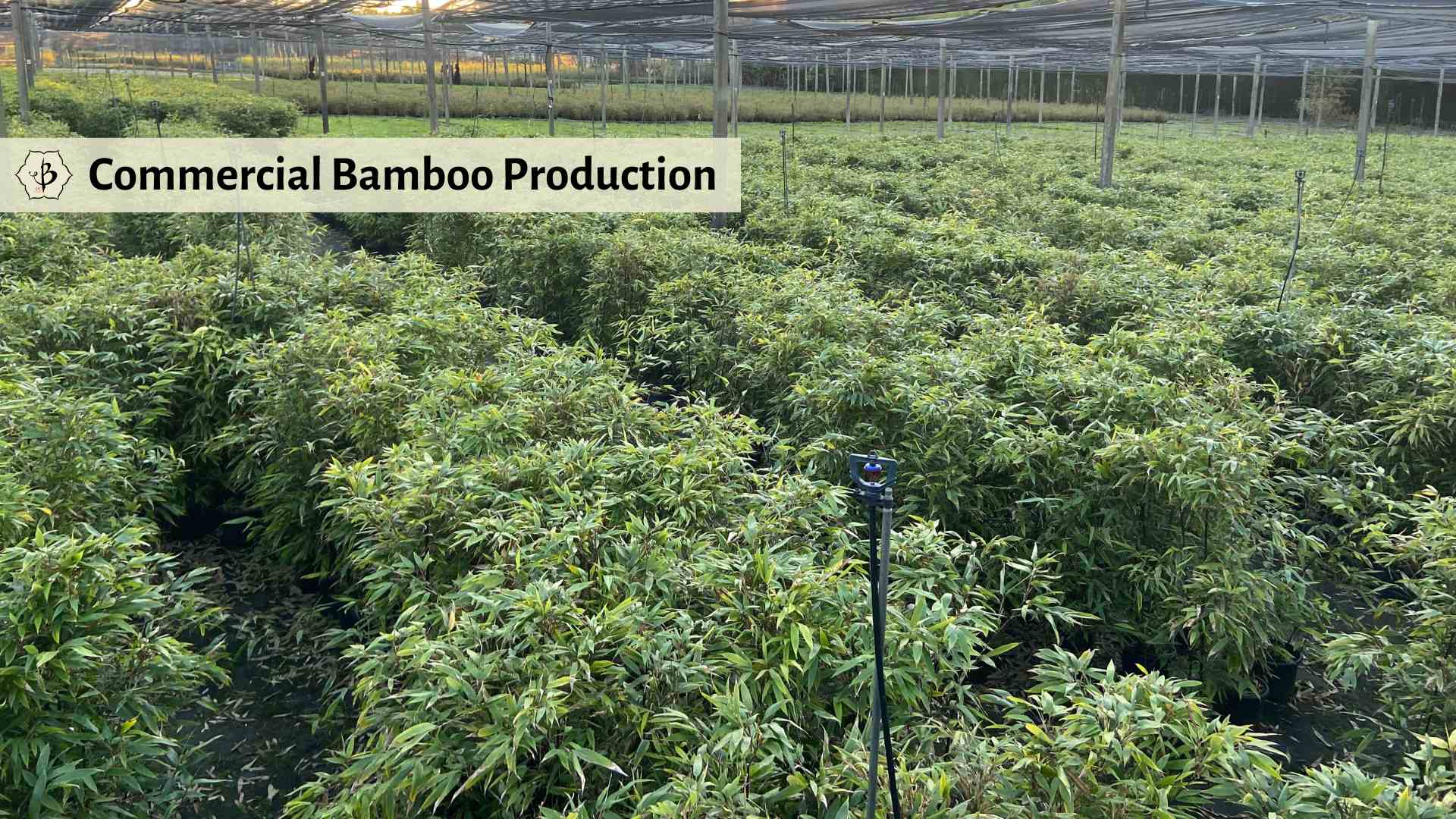
Conclusions
In terms of sustainability, no resource can match bamboo with its vigorous growth habit and unlimited versatility. But reducing carbon footprints also means sourcing materials from closer to home. And as long as all the bamboo is coming from China and the Far East, that will be a drawback.
Stateside advocates for sustainability and environmental responsibility are finally now cultivating plantations to meet America’s healthy appetite for bamboo. While farmers in places like Kentucky and in the Midwest jump on the hemp bandwagon, the Deep South is tapping into the potential of bamboo.
Until further research can prove otherwise, it appears that the area around the Gulf of Mexico is best suited for commercial bamboo farming. Only in this hot, humid, semi-tropical climate will the giant timber bamboo achieve its full size. Elsewhere, in cooler zones, the growth would be somewhat stunted, and domestic farmers could have a hard time competing with Chinese bamboo. Even so, cultivating a domestic supply of this vital resource would seem to be in our national interests.
But there are still risks and challenges with growing Asian bamboo in North America. Some species may not do so well on this continent, and others may do a little too well, driving native ecosystems into extinction. Finding the “Goldilocks” varieties that are neither too much nor too little isn’t easy, and a great deal of research remains to be done.
Thanks to trailblazers like OnlyMoso in South Florida, National Bamboo in North Carolina and Resource Fiber in Alabama, Americans are finally farming bamboo on a large scale. At this point, the most ambitious farms are in Florida’s citrus zone, but Georgia is also recognizing the economic promise of bamboo in the Peach State.
If all goes well, the bamboo fields may someday stretch all the way from Miami to Houston and upwards toward Kentucky. But keep in mind, the key to sustainability is to maintain balance and diversity. The goal is to farm in a way that’s compatible and complementary with native forests and grasslands, and not to replace them all in the name of “green gold.”

Further reading
To learn more about farming bamboo in the US, check out the works of Daphne Lewis. She is the author of several books about bamboo, including Farming Bamboo and Bamboo on the Farm: Increase Your Income, which are both great reference guides for the beginning farmer.
You can also contact us directly or check out some of our related articles.
- Investing in Bamboo: Yield of greens
- Best bamboo varieties for building and construction
- Best bamboo to grow for poles
- Growing bamboo for erosion control
- Bamboo and carbon sequestration
- Why bamboo is more sustainable
- Genus Arundinaria: Native bamboos of North America
- Bamboo farming in Europe
FEATURE IMAGE: Bamboo farming in action. Photo by Fred Hornaday.

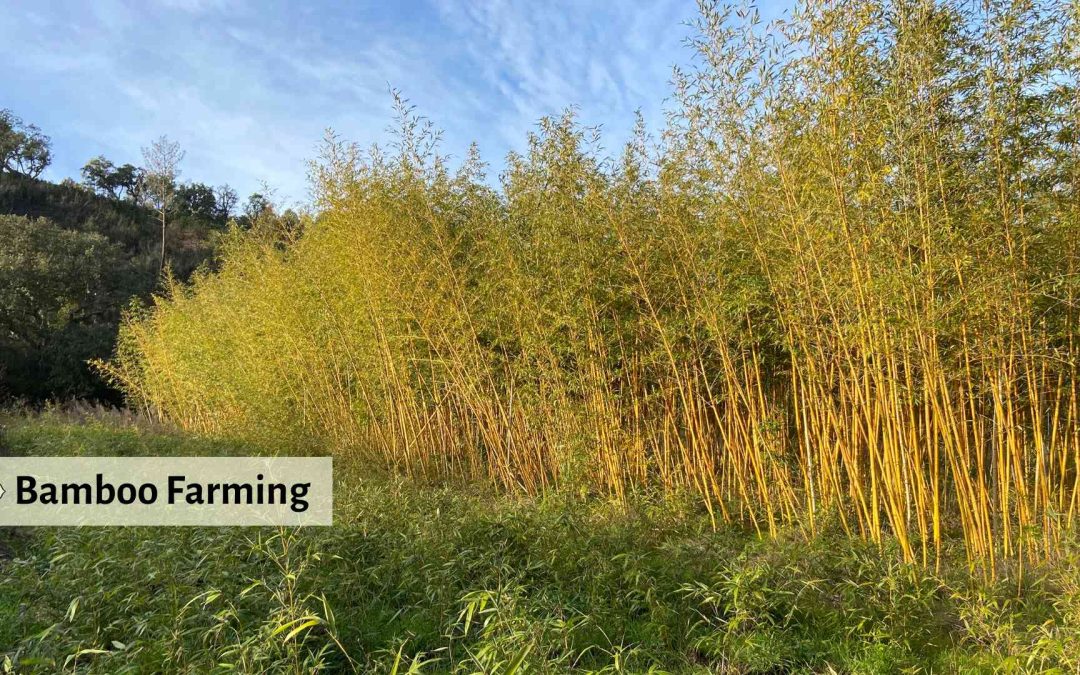
























Hello Fred:
Imperial Bamboo, located in El Centro, CA, has been growing bamboo for past 25 years.
Christian has been active and can share his experience for restoring the Salton Sea with bamboo plantations.
Thank you, Phil. I will add the nursery to our directory, and will definitely check out the restoration work in the Salton Sea.
hi Thanks for this great article … can you please also share if someone wants to grow bamboos on commercial basis where they can sell in US or Canada ?
I have 1lac bamboo in this upcoming year, if anyone interested, contact me soon.
Where’s your bamboo farm?
Excellent information,motivating at the first thought
Hello Mr Fred Hornaday!I am from China and I will come to the United States in 2022. I want to grow Chinese bamboo in Coos Bay or Ashland, Oregon. I would like to hear your advice. How is the bamboo market? Is it a good time to invest in growing bamboo, I currently live in Houston, Thank you so much!
Many high quality species of bamboo will grow especially well up in the Pacific Northwest. Interest in bamboo and bamboo products is greater than ever. Keep in mind, there are hundreds (if not thousands) of products you can make from bamboo, so the success of your business venture will depend on many things, including what product(s) you choose to make and how well your market them. If you just want to sell the raw material, it’s not so easy.
In india so can contact me on achyutautade3@gmail.com
Great info! Thanks for doing this important story.
Bamboo is a great source with never ending possibilities, I wish the world increases its uage!
Are there any Bamboo Farms/companies that are publicly traded on the markets?
Thanks Steve, I don’t know of any at this point. But I’m working on an article about investing in bamboo, so keep an eye out for that in the next few weeks.
Great article. Thanks for the update as well.
Would like more info
Check our this new article about investing in bamboo.
Great article!
IMO it would be great if politicians would use paper made from DOMESTIC bamboo for their campaign literature. Every election cycle my mailbox is over loaded with campaign literature most of which I don’t read, and so wasteful.
Hello Fred,
I am quite impressed by your research and articles about bamboo farming especially in Kenya. I would like to know if there are varieties for arid and semi arid areas. Please as well let me know if you happen to come to Kenya, I would like to meet you.
Hi Fred,
This is very interesting article and have learned so much. I was just curious if you knew which species of bamboo has the most currently standing in Florida?
I believe there’s a lot of Bambusa vulgaris in the wild, but D. asper is the most popular among commercial farmers.
https://bambubatu.com/dendrocalamus-asper-dragon-bamboo/
We live on 8 1/2 acres … at least 6 of it is bamboo of different varieties
😊
We truly live in a bamboo jungle in the foothills of the Ozarks of Arkansas with our Maine coons and chihuahuas
Sounds like a little patch of paradise!
I have small field of bamboo that’s been growing a little over 15 years. The patch is about 60 feet long, 20 feet wide and anywhere from 30-50 ft high. Is there a company that can come and take it for free? It’s encroaching all over my property. I’m in Pennsylvania USA.
You might reach out to Only Moso in Florida. I understand they are interested in buying US grown bamboo for various purposes. But if you want someone to come and remove the entire plant, roots and all, you’ll probably have to hire a landscaping company with an excavator.